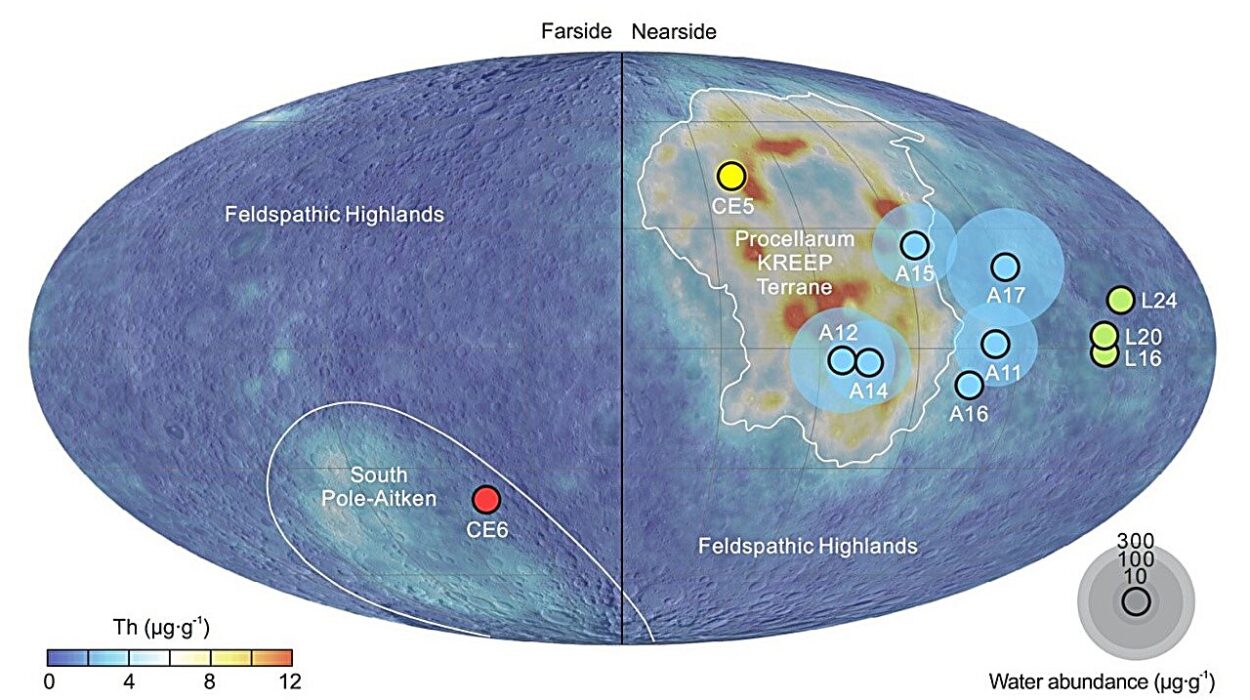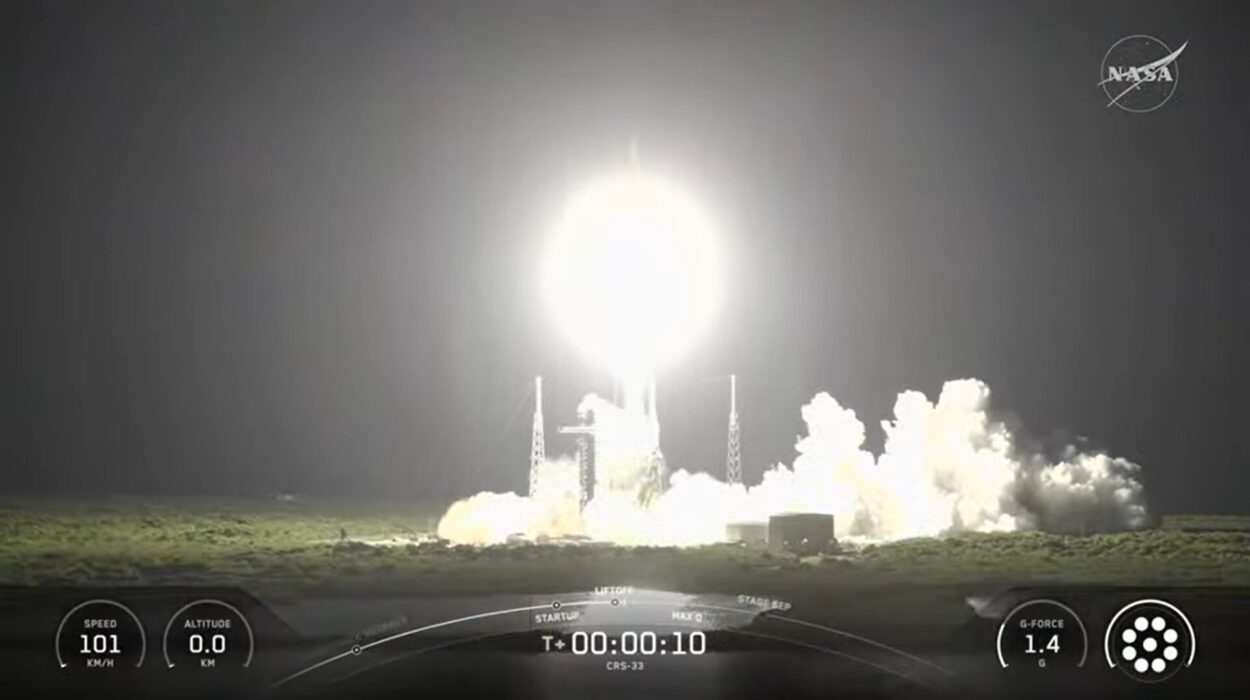In the quiet stillness of space, something extraordinary happened. On March 16, 2025, a flash of radio energy—lasting just a fraction of a second—burst forth with such brilliance that it briefly outshone every other radio source in its host galaxy. This fleeting cosmic event, now called FRB 20250316A and nicknamed RBFLOAT (“radio brightest flash of all time”), has stunned astronomers around the globe. It is the brightest Fast Radio Burst (FRB) ever detected, and for the first time, scientists were able to trace such a powerful signal back to its exact cosmic home.
The discovery, led by an international team of researchers including astronomers from the University of Toronto, marks a turning point in our understanding of FRBs—mysterious bursts of energy that arrive from across the universe like lightning flashes from the dark.
What Exactly Are FRBs?
Fast Radio Bursts are among the most enigmatic phenomena in modern astronomy. They are short, intense pulses of radio waves, lasting mere milliseconds to a few seconds, but in that brief window, they release as much energy as the Sun emits in days—or even weeks. First discovered in 2007, FRBs have since been detected in the thousands, thanks in large part to Canada’s CHIME (Canadian Hydrogen Intensity Mapping Experiment) telescope.
Yet, despite these discoveries, FRBs remain shrouded in mystery. Where do they come from? What powers them? Are they linked to highly magnetized neutron stars called magnetars, or are some triggered by cataclysmic explosions? Pinpointing their locations is the key to answering these questions, and that is exactly what makes RBFLOAT so groundbreaking.
Pinpointing the Brightest Burst
The CHIME telescope in British Columbia, along with its network of new “outrigger” instruments in California and West Virginia, made this breakthrough possible. By combining their observations through a technique known as Very Long Baseline Interferometry (VLBI), astronomers achieved astonishing precision—locating the FRB’s origin to within just 45 light-years across, a tiny patch of sky smaller than the average star cluster.
To put this precision into perspective: it’s like standing in New York and spotting a guitar pick lying on the ground in Chicago, nearly 1,000 kilometers away.
“We were ultimately extremely lucky that we were able to pinpoint the precise sky position of this rare event,” said Mattias Lazda, a Ph.D. student at the University of Toronto who co-authored two papers on the discovery. “A few hours after we detected it, one of our telescope sites experienced a power outage. Had the event happened later that day, we would have completely missed our chance.”
A Flash from Our Cosmic Neighborhood
Unlike many FRBs that originate billions of light-years away, RBFLOAT came from relatively close by—just 130 million light-years from Earth, in a galaxy called NGC 4141, located in the constellation Ursa Major. Astronomically speaking, that’s our neighborhood. Its proximity explains why it appeared so dazzlingly bright and why astronomers were able to study it in such detail.
“This means we get this chance to study a pretty normal FRB in exquisite detail,” said Kiyoshi Masui, associate professor of physics at MIT and a collaborator on the study.
For all its power, RBFLOAT lasted just one-fifth of a second. Yet in that blink of cosmic time, it gave scientists a trove of information that will shape FRB research for years to come.
A Cosmic Surprise with the James Webb Space Telescope
The precision of CHIME’s outrigger array did more than just localize the burst—it enabled follow-up observations with the James Webb Space Telescope (JWST). For the first time, astronomers captured a faint infrared glow at the location of an FRB.
What exactly this signal represents remains a mystery. Could it be a red giant star sitting near the source of the burst? Or was it a fading light echo left behind by the FRB itself?
“The high resolution of JWST allows us to resolve individual stars around an FRB for the first time,” explained Peter Blanchard, a postdoctoral fellow at Harvard and lead author of the companion JWST paper. “This opens the door to identifying the stellar environments that could give rise to such powerful bursts.”
The sighting is significant because FRBs have long been difficult to connect to specific stars or stellar systems. Now, for the first time, scientists can begin mapping their environments in detail.
A Challenge to the Repeating FRB Theory
One of the biggest puzzles in FRB science is whether all FRBs repeat. Many well-studied sources have been seen producing multiple bursts, suggesting that they might come from long-lived objects like magnetars.
But RBFLOAT refuses to conform. Even after combing through six years of CHIME data and hundreds of hours of observations at the location, astronomers found no sign of repeat activity.
“This burst doesn’t seem to repeat, which makes it different from most well-studied FRBs,” said Amanda Cook, a Banting postdoctoral researcher at McGill University and lead author of the radio study. “That challenges a major idea in the field, that all FRBs repeat, and opens the door to reconsidering more explosive origins for at least some of them.”
If RBFLOAT came from a one-time catastrophic event—such as the collapse of a massive star or the merger of exotic objects—it could mean that the FRB population is more diverse than scientists thought.
A New Era of Discovery
The discovery of RBFLOAT represents more than just a record-breaking burst. It marks the beginning of a new era in FRB astronomy, where advanced networks of telescopes and space observatories work together to unravel their secrets.
By linking CHIME’s FRB-detecting power with the precision of its outrigger array and the sharp vision of JWST, astronomers are beginning to bridge the gap between mysterious flashes of radio energy and the physical environments that produce them.
Two papers, published in The Astrophysical Journal Letters, describe these findings in detail—one focusing on the radio detection and pinpointing of RBFLOAT, the other on JWST’s follow-up infrared observations. Together, they paint the most detailed picture yet of an FRB and its surroundings.
The Mystery Continues
Even with this milestone, FRBs remain one of astronomy’s greatest mysteries. They are cosmic fireworks that appear without warning, blaze brilliantly for an instant, and vanish into the darkness. RBFLOAT may be the brightest yet, but it has left behind as many questions as answers.
What powered this burst? Why did it not repeat? What does its host environment tell us about the kinds of stars or events that create FRBs? With every discovery, the universe offers tantalizing clues—but also deepens the enigma.
And perhaps that is the real beauty of RBFLOAT. In its brief, dazzling flash, it reminded us that the cosmos is not a solved puzzle but an unfolding story—one that humbles us, inspires us, and calls us to keep looking up.
More information: Thomas C. Abbott et al, FRB 20250316A: A Brilliant and Nearby One-off Fast Radio Burst Localized to 13 pc Precision, The Astrophysical Journal Letters (2025). DOI: 10.3847/2041-8213/adf62f
Peter K. Blanchard et al, James Webb Space Telescope Observations of the Nearby and Precisely Localized FRB 20250316A: A Potential Near-IR Counterpart and Implications for the Progenitors of Fast Radio Bursts, The Astrophysical Journal Letters (2025). DOI: 10.3847/2041-8213/adf29f






